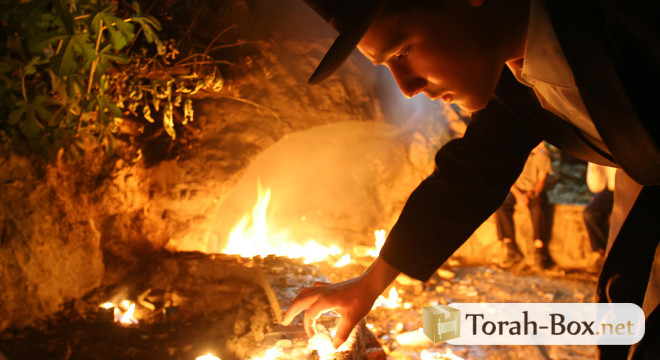
Lag BaOmer
Lag BaOmer: The Divine Fire of the Mitzvah
The 33rd day of the “Omer,” known in Hebrew as Lag BaOmer (based on the numerical values of the letters Lamed and Gimmel adding up to 33), is a very important day for the Jewish people. It was on that special day that Rabbi Shimon Bar Yochai, the author of the Zohar and one of the greatest tzaddikim in Jewish history, passed away. Over time, Lag BaOmer became a day of rejoicing. Thousands of Jews visit his grave on that day in Meron in Northern Israel, where they dance, eat and drink in his honor.
But isn’t this rejoicing an issue? After all, the death of a tzaddik is a tragedy. The seventh of Adar, the date on which Moshe Rabbeinu died, is considered a day of mourning. So what differentiates these two yahrzeits (anniversary of passing)? The author of the Idra Zuta, notes in his commentary on Parashat Haazinu, that Moshe cried on the day of his death because he knew he would not be allowed to enter the land of Israel. Yet, unlike Moshe, Rav Bar Yochai rejoiced and requested that others do likewise, when commemorating his passing.
Why would a great rabbi request celebrations on such a grim day? Our sages teach us that when Bar Yochai died, his neshama (soul) ascended to heaven and entered into a mystical union with the higher worlds. This mystical union is likened to a marriage. Hence, the custom of celebrating the Hilula (Aramaic for marriage) of Bar Yochai every year at his grave on the day of his death. This divine fire is the inspiration for the many bonfires that can be seen dotting the hills of Meron every Lag BaOmer.
Of course, Lag BaOmer is also known for other positive events tempered with sadness. Thousands of years ago, during the time of the Second Temple, 24,000 students of the Tanna Rabbi Akiva passed away within 32 days of a plague, which eventually stopped on the 33rd day of the Omer. Despite losing all of his students, Rabbi Akiva did not fall into despair but rather demonstrated exceptional courage, optimism, faith and determination. On the day the plague stopped, he moved to southern Israel, recruited five new students (including Bar Yochai) and immediately resumed teaching Torah.
(Rabbi Akiva's 24,000 students were their generation’s Torah giants and their sudden death was an unprecedented catastrophe for the Jewish people. As a result, the sages instituted several signs of mourning which we observe between Passover and Lag BaOmer, including a ban on marriages and haircuts.)
As a result of Rabbi Akiva’s actions, the transmission of Torah was secured. While speaking with his new group of students, the great sage warned them that their predecessors’ deaths had been caused by jealousy.
According to the Chida (Rabbi Yosef David Azoulai), Rabbi Akiva’s new students took his warning very seriously. This was reflected in their extreme devotion to teach Torah to the Jewish people; there was no personal calculation involved but only an overflowing love for the Almighty and an unwavering desire to transmit His Torah.
As such, the Chida teaches that the immense joy we feel on Lag BaOmer is the actual realization that the Torah, after its near disappearance, has come back into our midst for eternity.
Torah-Box.net Account
To access the entire Torah-Box.net website, sign up for free in less than a minute.
Weekly Parsha
 Candle Lighting - New York
Candle Lighting - New York
Friday January 2nd, 2026 at 16:22 *Shabbat ends at 17:27 *
change my location
* Times given as an indication, check the times of your community











